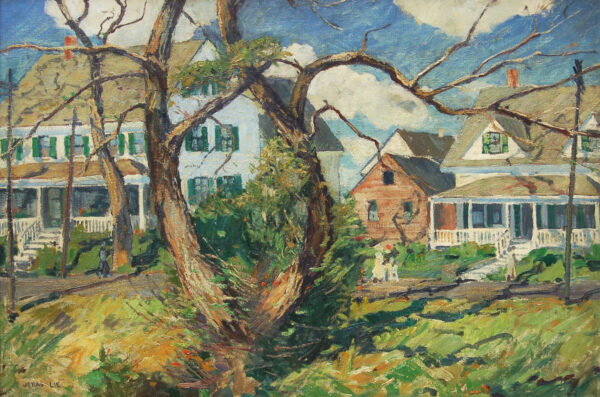Jonas Lie (1880–1940) was a Norwegian-American painter celebrated for his vibrant depictions of New York City and the New England coast, blending the luminous brushwork of French Impressionism with the bold realism of the Ashcan School. Born in Moss, Norway, to a Norwegian engineer and his American wife, Lie grew up surrounded by artistic influences—his namesake uncle was a renowned writer, and two aunts were accomplished pianists and composers. Though initially drawn to music, his life took a decisive turn at age twelve when his father’s death led him to live with painter Christian Skredvig near Oslo. This brief apprenticeship ignited his passion for art, and he soon joined his uncle in Paris, where he studied at a private academy and absorbed the creative energy of Scandinavian expatriates like Edvard Grieg and Henrik Ibsen.
Reunited with his family in New York in 1893, Lie studied at the Ethical Culture School and later supported his mother and sisters as a textile designer while honing his craft at the National Academy of Design and the Art Students League. Inspired by Norwegian Impressionist Fritz Thaulow, he painted urban scenes and seaside sketches in his spare time. By 1906, he abandoned commercial work to pursue painting full-time, embracing the gritty urban aesthetic of the Ashcan School. A transformative trip to Paris and Norway in 1909–1910 expanded his palette and subject matter, leading to sweeping landscapes of the Adirondacks and New England shores.
Lie’s career reached new heights in 1913 with his Panama Canal series, a dynamic documentation of the engineering marvel that earned acclaim and acquisitions by major institutions like the Metropolitan Museum of Art. A charismatic figure in the New York art world, he spearheaded a 1919 revolt against the National Academy of Design’s conservative jury system, co-founding the progressive American Painters, Sculptors, and Gravers Society alongside artists like George Bellows. Despite his rebellious stance, Lie remained committed to reforming the Academy from within, eventually serving as its president from 1934 to 1939.
His works, held in collections such as the Art Institute of Chicago, the Brooklyn Museum, and the Museum of Fine Arts, Boston, capture the vitality of modern life—from the steel-and-stone grandeur of cities to the untamed beauty of coastal and industrial landscapes. Lie’s legacy endures as a bridge between European Impressionism and American realism, infused with the energy of an artist who painted as fervently as he advocated for artistic freedom.

